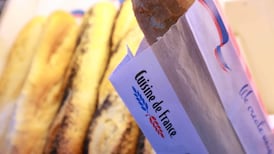The US dollar has hit new lows on the foreign exchange market, with all eyes now on today's statement on US interest rates from the Federal Reserve Board.
The euro rose through $1.22 yesterday, touching a new record high against the dollar as fears about the US current account deficit continued to dominate market sentiment. In late US trade last night, it remained above the $1.22 level. Low US interest rates are one factor depressing the dollar, as they reduce the yield for investors on US assets.
The Federal Open Market Committee, the Fed's key policy-making body, is widely expected to hold base interest rates at their current 45-year low of 1 per cent, when it meets today.
There will be keen interest, however, on whether it changes its interest rates outlook.
So far the Fed has continued to indicate that interest rates would remain low "for a considerable period", despite signs of economic recovery in the US.
Any sign that it was ready to raise rates early next year could give some support to the currency, with investors worried that current rate levels are insufficient to attract the level of overseas funding necessary to finance the deficit on the current account of the balance of payments.
Yesterday analysts noted the latest warning sign had come from a Bank for International Settlements report overnight showing OPEC countries, which mainly earn in dollars, had repatriated funds at an accelerated pace in the first half of this year.
Late yesterday the euro was trading at $1.2220, having touched $1.0238 earlier, a gain of 0.4 per cent on the day. The dollar also hit a three-year low of 107.18 yen and was at a five-year low against sterling, which climbed as high as $1.7361.
Traders in international markets said that despite the headline-grabbing levels, the market was fairly quiet in pre-holiday season trade. The dollar has lost 17 per cent against the euro and more than 10 per cent against the yen since the start of 2003.
Analysts in Dublin said sentiment towards the US currency remained negative, despite signs of a recovering US economy.
Low US rates and concerns about the funding of the current account deficit were the key factors for the market, according to Mr Oliver Mangan, economist at AIB Capital Markets.
The weaker-than-expected US job figures last Friday were seen as another excuse for the Fed to "sit on its hands" and leave rates at current levels, he said.
The strong economy will only start to benefit the dollar when it translates into higher US interest rates, he said, and in the interim the US currency could be volatile and weak in thin pre-Christmas market.
In recent days, the euro has borne the brunt of dollar appreciation, he pointed out, and sterling has been reasonably strong and has not dropped in tandem with the latest dollar fall. This will come as some relief to Irish exporters, who will find their competitiveness eroded by the strength of the euro.
If sterling were to maintain its traditional dollar relationship and fall along with the US currency, this competitive squeeze would intensify. However, the UK currency has remained reasonably firm and the euro traded yesterday at 70.4p.
The squeeze on exporters from the rising euro is illustrated by the nominal trade-weighted competitiveness indicator, compiled by the Central Bank.
The index, which measures the value of the euro weighted to reflect Irish trade patterns, rose yesterday to 102.61, up from 101.96 a week ago and its highest level since last June. The indicator hit its 2003 high of 103.11 at the end of May.










